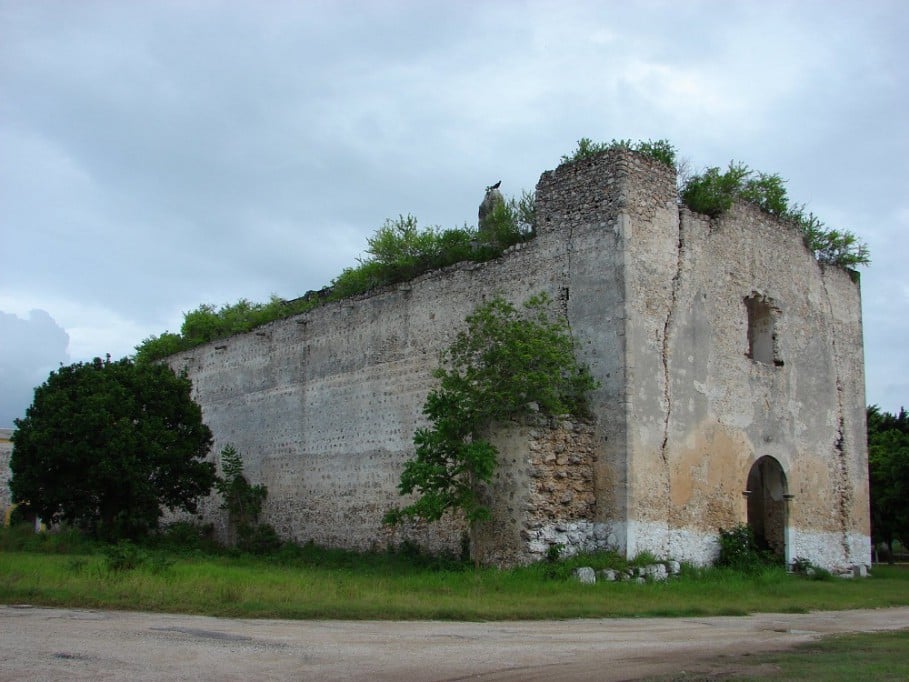The Kikil Convent Near Valladolid: Legends and Faith

Just north of Valladolid, in the quiet town of Kikil, stands a little-known but historically rich site. It is the former Franciscan convent of Kikil. Dating back to 1760, this religious and cultural space offers a glimpse into both the colonial and pre-Hispanic layers of Yucatán’s past. The place is now partially in ruins and embraced by nature. But the convent remains a point of pride for the community. Also, a rewarding stop for travelers seeking authenticity and local heritage. Here are some words on The Kikil Convent Near Valladolid.
A Colonial Monument with Deep Roots
In 1760, Franciscan missionaries built this place. The Kikil convent served as a religious outpost during the height of Spanish colonial efforts in the region. The structure, though simple compared to other Yucatecan convents, is notable for its unique building materials. The walls were made of sascab (a local soft limestone) mixed with bee honey, while lime was created from burnt limestone and crushed animal bones. This blend of indigenous and European building techniques showcases a compelling fusion of cultures and eras.
Rare Artifacts in a Small but Powerful Museum
Inside the convent grounds, visitors will find a small museum that houses valuable artifacts deeply tied to local identity. Among them is a replica of a Chac Mool, representing a red jaguar deity significant in Toltec-Maya cosmology. The museum also displays an original copper-and-tin church bell weighing approximately 300 pounds, two Spanish weapons from the time of the Conquest, and zapote wood steps that once led to the bell tower—remnants that speak to centuries of faith, conflict, and craftsmanship.
The Kikil Convent Near Valladolid Towering Trees and Sacred Legends
Beyond the walls of the convent, poplar trees over 130 years old offer welcome shade and a sense of permanence. The tranquility of the site is enriched by oral traditions tied to the place’s name. According to local lore, Kikil (from the Mayan word k’i’ik’, meaning “blood”) may refer to a priest who was beheaded in the church. However, a more accepted theory is that the name predates colonization and is derived from k’i’ik’ che’, meaning “rubber tree.” These legends add an air of mystery to the visit.
A Walk Through History, Free of Charge
Tours through the convent are led by knowledgeable locals and last around 25 minutes. While there is no formal admission fee, donations are appreciated to help preserve the site and continue educational efforts. Walking through the leafy grounds and into the heart of the old convent, visitors are often struck by the silence, the scent of aged stone, and the echo of prayers from centuries past.
The Kikil Convent Near Valladolid A Town Frozen in Time
Kikil has never been a densely populated place, which may explain why the Franciscan order eventually abandoned the convent. Still, its vegetation-covered ruins now serve as a time capsule—silent yet striking—of the religious, cultural, and architectural history of the Yucatán Peninsula. Though often overlooked by mainstream tourism, Kikil and its convent are well worth a detour for those traveling between Valladolid and the northern coast.
Whether you’re a history enthusiast, a cultural traveler, or simply curious, the Kikil convent offers a rare and intimate look into the convergence of Mayan tradition and Spanish colonialism—an enduring symbol in the Yucatán landscape.
